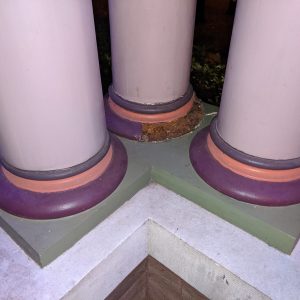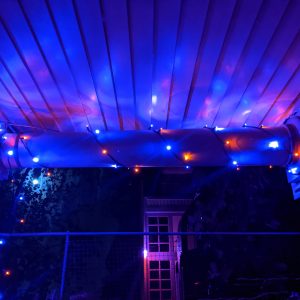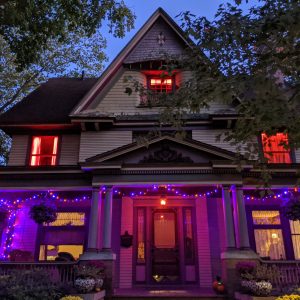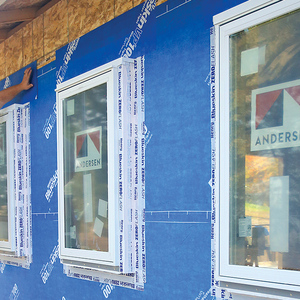1904 Queen Anne. Fourteen rotten porch column bases (attic profile). Slight diameter variations. Suggestions?
Victorian house. The front porch has a dozen columns and this year half of them decided to go from looking fine to being substantially rotted. Seems like the Duration paint was acting like a water balloon and made the wood rot at an a accelerated pace. The columns are solid and are barreled (hollow) construction. The square plinths and attic bases are what’s rotting.
I really wanted to replace all the plinths/attic bases with the load-bearing, synthetic material ones being made by specialty shops and that have drainage notches in the base such as these https://columnsdirect.com/products/load-bearing-vented-attic-column-base . There are 8 or so different manufacturers who all make a nearly identical attic style plinth/base, with slight difference but what they have in common is they support 6″ EXACT columns, and mine vary between 6.1″ and 6.25″. Short of custom dimensioning all 14 from the shop I’m stuck.
My only other idea is to get the wrap around bases, order them all to my largest diameter, set the columns on big wood “plugs” that these websites offer and caulk/fill the minor gap.
I was really hoping to just drop a grand on exact profile/height matches, that will never rot on me, and allow the original columns to drain any condensation. I’m open to any ideas and sorry if I offend anyone with wanting to go synthetic.























Replies
Maybe I'm not understanding the problem... Instead of dropping a grand for new plinths (and copious amounts of filler material), simply drop 2 grand on available profile columns and bases or even 3 grand on new and identically sized, custom moulded columns and custom moulded plinths that match your existing profile. They will all fit together as a system. No one will notice that they aren't handmade and don't vary by 0.1 to 0.25 inches like the originals. Heck, making column and plinth moulds, identical to your current ones, is well within the realm of a DIYer. There are lots of videos on fibreglass and mould making on the Internet. Then find a custom fibreglass manufacturer to make the columns and plinths. If you decide to go this route, hairspray, which happens to contain the required polyvinyl alcohol, is a cheap and readily available mould release agent. You'll need it to release the mould from a column and plinth that you take down and use as what is known as a "plug". Who needs a quart of more of left over release agent sitting around in their garage. Another thing... make sure that your column and plinth plugs, from which you make your moulds, are as perfect as possible. Every imperfect detail will become part of the mould and telegraph through to each column/plinth. --finish the plugs like nice furniture.
If I buy new plinths/attic moldings there will be no wood filler. Those two pieces are all the column itself sits on.
The top diameter of those available are 6" exactly outside diameter. With mine varying and being all slightly larger than 6" they would not be flush or smaller but instead be slightly larger than what they're sitting on, creating a lip and not being fully supported. The existing columns being reused need to be flush or slightly small diameter than the profile they're sitting on.
It's well within the possibility to chart out the actual diameters of all 14, along with actual heights for that matter since they're all going to be custom. What just seeing if there was a solution I wasn't considering.
As far as replacing the columns and whatever else new, I'd prefer not to. It's on the historic registry (which isn't a big deal, they'd let me replace them) but I'd hate to lose the character of these handmade columns (not bases) that are still in phenomenal shape despite being made 45 years ago under the previous owner. Plus, for 14 columns, I don't have $6,000 to be dropping on entirely new kits. (14*$425) or at least not next Spring.
Find a local custom stair shop that does turnings. These wouldn't be hard to turn from cedar.
I now understand better. Andy's suggestion is good. Cedar isn't like the old growth cedar. There are other species you might consider.